Getting further into the universe
The cave you are afraid to enter keeps the treasure you are looking for.
- Joseph Campbell
As you know, space is mostly empty, and the typical distance between galaxies exceeds the size of the galaxies themselves.
But in some individual regions of the universe, where the mass density exceeds the average, galaxies accumulate thousands. The closest cluster to us is the Veronica Volos cluster, which contains more galaxies than 95% of all the clusters we know about.
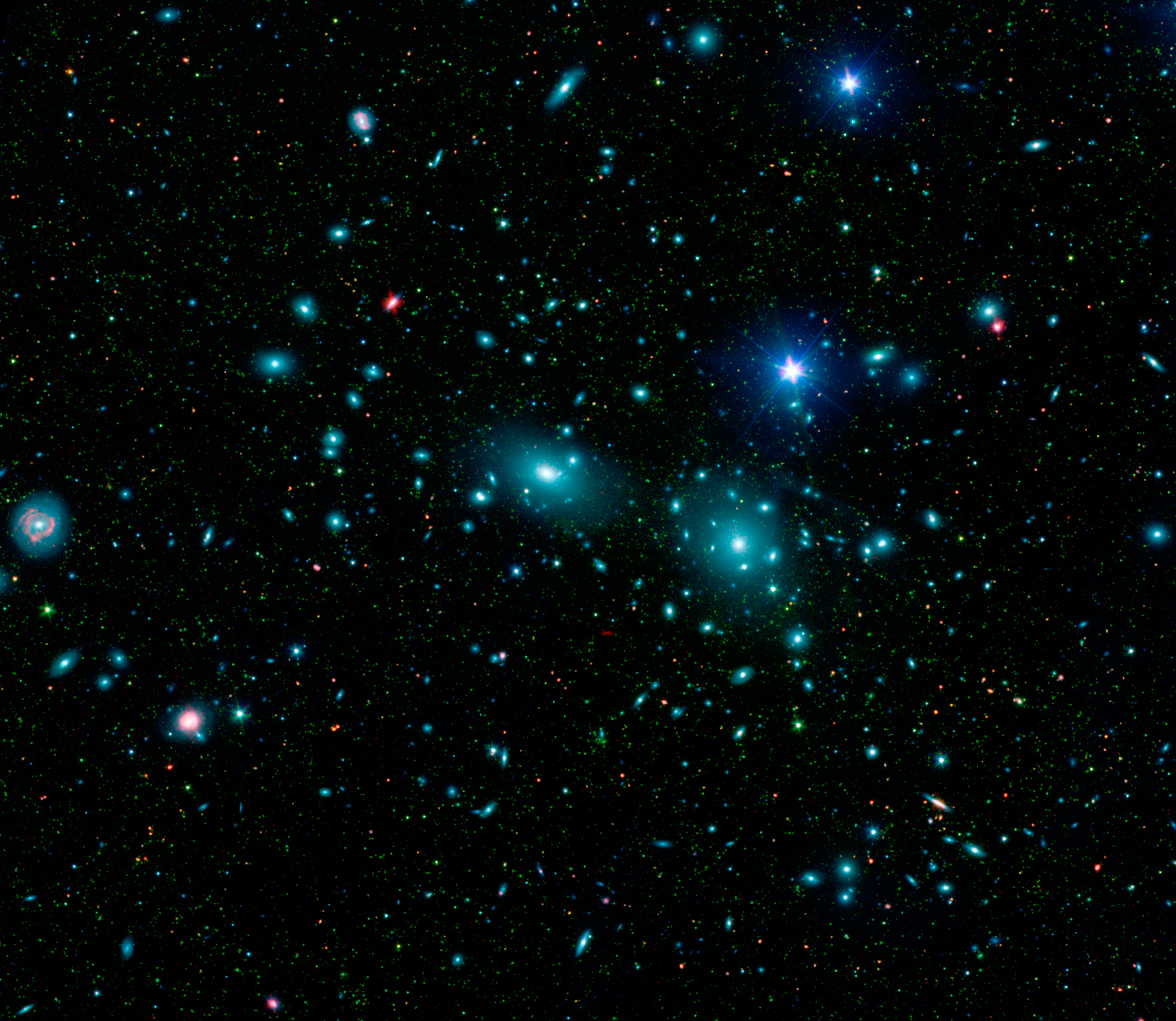
')
The first thing to notice about these galaxies is that, unlike the Milky Way, Andromeda, and the large number of galaxies located in our area, there are practically no spiral galaxies in the cluster of Veronica's Hair, especially in its center.
If we make an atlas of the galaxies of this cluster, it turns out that there are less than 10% of spiral galaxies in it.
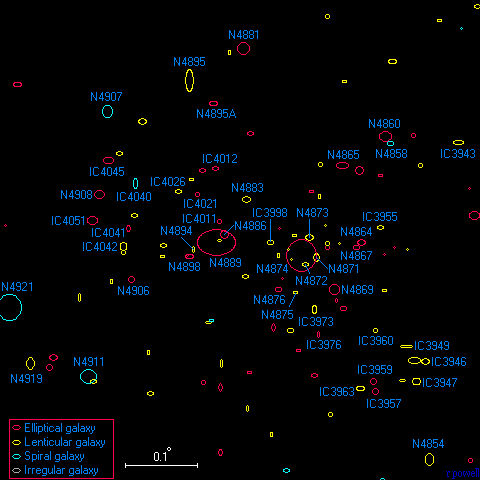
These spiral galaxies are unlikely to survive long enough in such a chaotic environment. Let's take for example one of them in order to better understand what is being said.
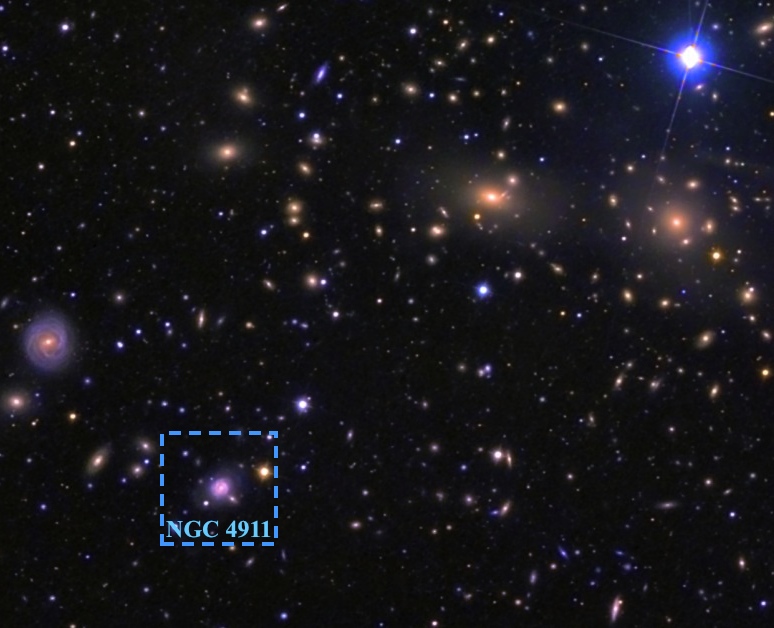
NGC 4911 is a spiral galaxy, very similar in mass and size to our Milky Way. Fortunately, so far it has not met with galaxies in the vicinity, but just one merger will destroy its beautiful spiral arms and turn it into a more common elliptical form, which are complete next door.
The Hubble telescope recently observed this galaxy at different wavelengths for 28 hours, resulting in the following high resolution composite photo.
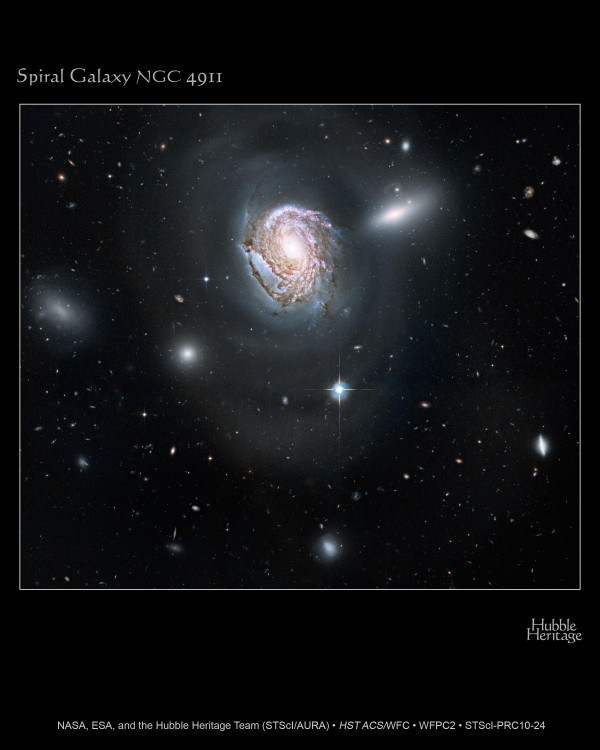
At a distance of 320 million light-years from us, the entire galaxy — dust sites and so on — occupies less than one minute minute, or 1 / 60th degree, in our sky.
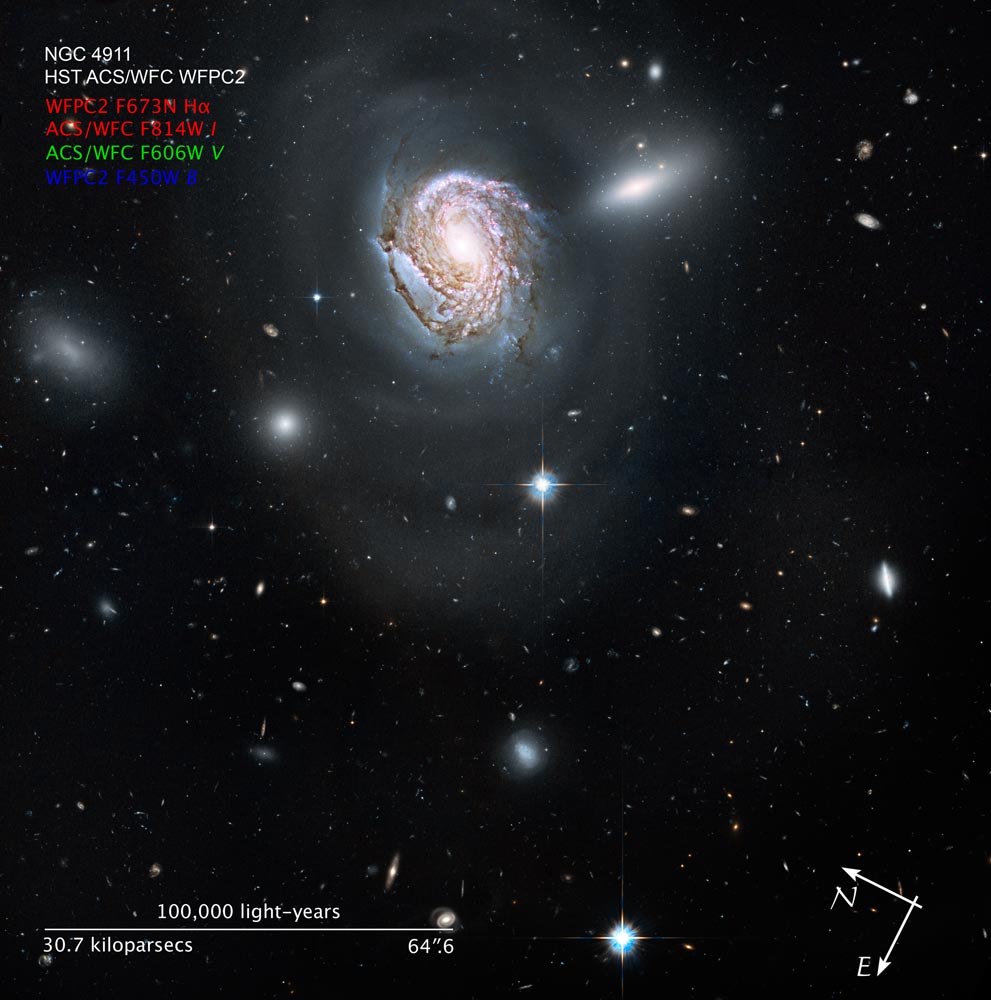
With hot pink spots around its sleeves and light blocking dust on top of the disk, the galaxy NGC 4911 tells us a well-known story when we magnify its image.
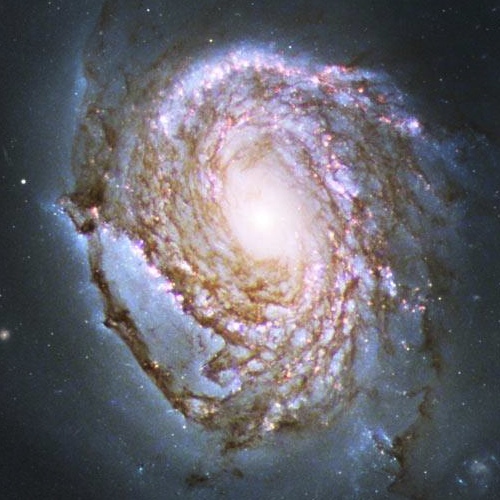
Fueled by tidal gravitational interactions with nearby galaxies and small associations with neighboring dwarf galaxies, NGC 4911 is engaged in the formation of stars and attract substances passing through the Veronica Hair cluster.
But if you look not at the bright stars of this galaxy, but at its outskirts with rare stars, you can see a less frequent spectacle, which, however, occurs at relatively short distances from us. For comparison, let's look at another galaxy.
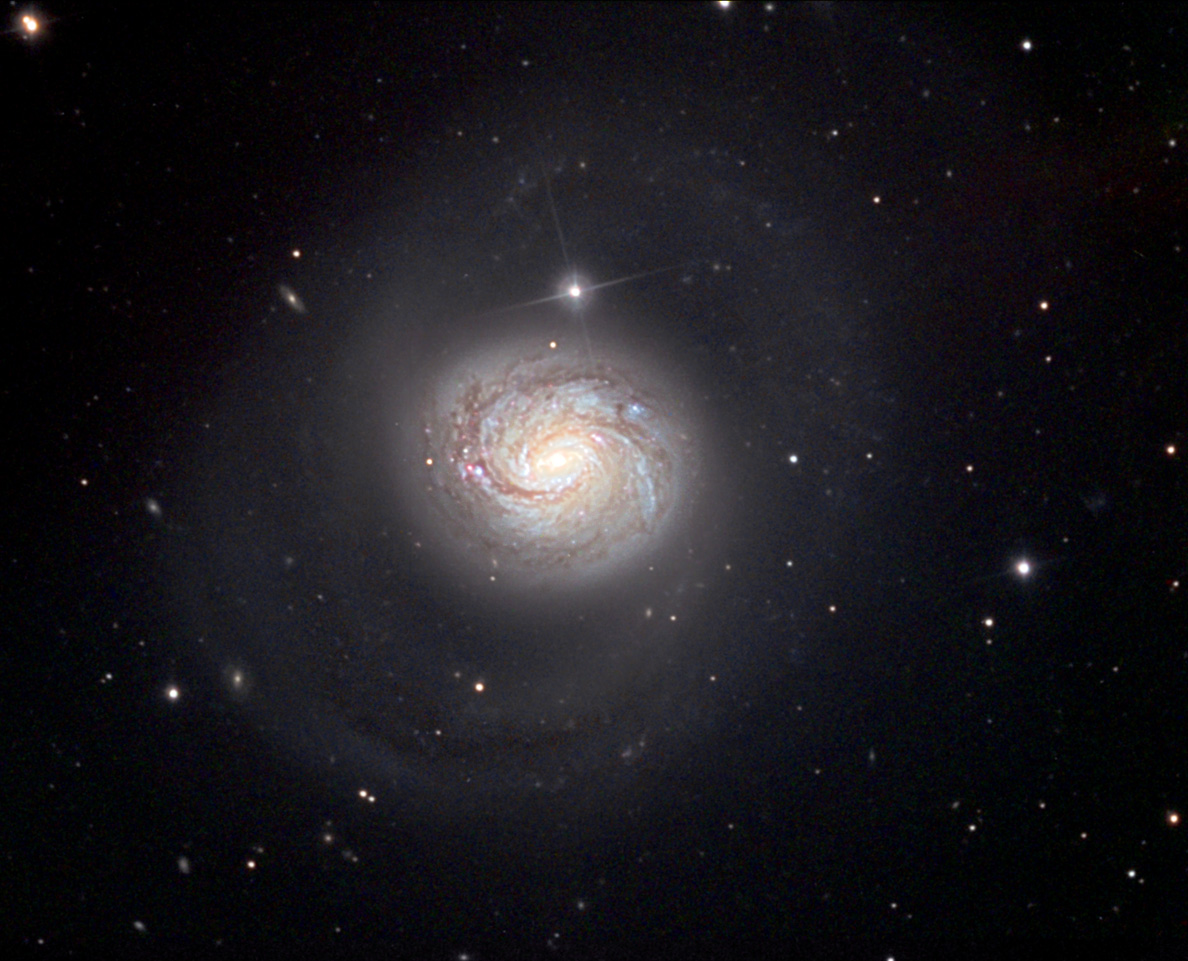
Less than 50 million light years away is one of the largest spiral galaxies in Messier’s catalog: spiral galaxy M77. Its diameter is 170,000 light years — almost 2 times longer than that of the Milky Way — and it is characterized by the presence of both an active core and large, albeit dull, spiral arms. More astronomical scientific works have been written on the M77 galaxy than on any other!
And although NGC 4911 is six times farther away, and it’s half the size, the amazing resolution of the Hubble telescope and 28 hours of observation allowed it to create an incredible image of its spiral arms!

Of course, one can also notice that there are a large number of points of light and various spots, mostly dull, but sometimes multicolored, next to the galaxy, behind its outer arms or next to them.
Hubble's permission is enough to pull a small patch out of the original image from the edge of one of the sleeves.

Each of these objects, visible after 28 hours of exposure, turns out to be dim, distant by a separate galaxy! You can remember how we discovered the number of galaxies in the Universe - this happened when we made a very deep photograph of a dark sky area using the same telescope.

The Hubble Ultra Deep Field project told us that there are 10,000 galaxies in the space area of just 11 square angular minutes! And this means that in the visible part of the Universe there are at least 120 billion galaxies.
It took almost ten times more time to create a photo of Hubble Ultra Deep Field than to photograph NGC 4911.
You might want to find out - if in the HUDF project we looked at a piece of sky not 280, but only 28 hours - how many galaxies would we see? Well, here's a smaller region, about 6 square angular minutes, in which there is a galaxy. And if you look at the sky next to her, what will we find?

According to my calculations, there will be about 225 galaxies per square angular minute, which corresponds to, extrapolating to the entire Universe, the presence in it of about 30-35 billion galaxies!
And this is already interesting, because, according to our calculations, the Universe works in such a way that the number of visible parts should be proportional to the square root of the observation time. That is, if we look 10 times longer, we should see √10 times more (about 3.16 times). And it is very close to the result obtained when creating the HUDF!
Then you may want to know how many galaxies we would see if we looked 100 or 1000 times longer! Then you need to be patient, because the exposure will last 1000 times longer than three years, or wait for a larger telescope to launch into space, especially capable of seeing in the infrared.

The team of the James Webb telescope
For example, such a telescope as the telescope of James Webb! [planned launch - October 2018 - approx. trans.]. Every time, looking deeper into the Universe, we find a more populous and richer Universe than we have seen before. I can’t wait for our next step, and I hope that I will be able to share its results with you as soon as we learn about them!
Source: https://habr.com/ru/post/399575/
All Articles